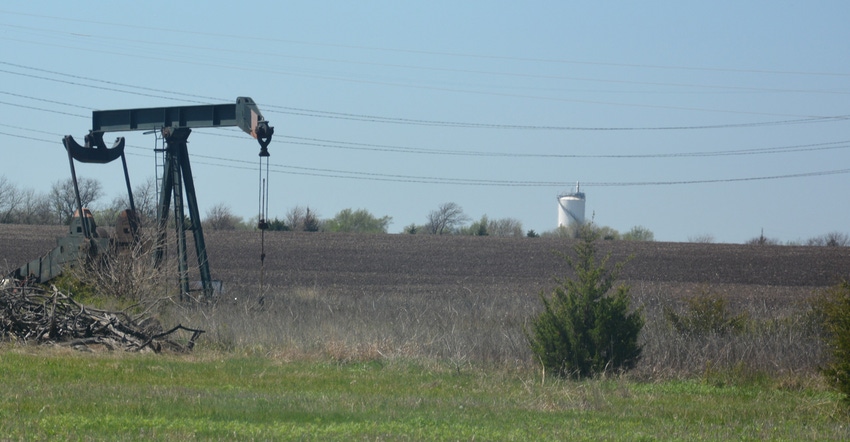
The Kansas oil industry will survive and perhaps even thrive once the world turns the corner on the coronavirus and returns to work. But the scars left behind by the ugly oil crash of 2020 could be with us for a long time.
“I think there’s a turnaround coming once demand returns and the market supply gets balanced,” says Ed Cross, president of the Kansas Independent Oil and Gas Association. “The oil industry will be back up and running in the medium term — the next couple of years.”
In the short-term, however, the only word for the impact on oil producers is “disastrous.” On April 21, the posted price of Kansas crude stood at $0.25 per barrel. On April 22, it was $4 a barrel. That’s considerably below what it costs to pump a barrel of oil out of the ground. And that means there will be a lot of wells shutting down.
The longer the pandemic lockdown continues, the worse the damage will be.
“Unless demand returns quickly and prices recover, layoffs among Kansas producers, which are predominantly small business, are inevitable,” Cross says. “Many of the small producers have probably applied for the federal Paycheck Protection Program loans, which could keep them in business for 8 to 10 weeks, but after that — barring further federal intervention — companies will simply have to let people go.”
Cross says the oil crisis is not just about the pandemic, however. That was already going to destroy an estimated 20 to 25 million barrels of demand. But the situation was made much worse by the supply shock created by Saudi Arabia and Russia, who were attempting to gain market share at the expense of each other and the U.S.
Their increased production resulted in a huge oversupply that threatens storage capacity. That threatens not just the Kansas oil industry but the national industry as well.
The repercussions for the Kansas economy and state budget shortfalls are daunting.
The collapse of the Kansas petroleum industry could cost state and local governments more than $1.4 billion in tax revenue annually as well as more than 118,000 jobs that provide $3 billion in family income to Kansas workers. It would also cost landowners with leased mineral rights about $600 million in annual royalties. Nationwide, the petroleum industry supports more than 10 million jobs.
Cross says that while most people associate oil with gasoline, petroleum is used to make far more than fuel. There are more than 6,000 products from soap to plastic are made from petroleum.
A widespread shutdown of oil wells could cause long-term damage to the industry in a number of ways. A large number of Kansas wells are “stripper” wells that produce only a few barrels of oil per day. As the oil price crash of 2014 taught Kansas, if those wells shut down many do not reopen. Cross says royalty payments to landowners remain down by $400 million annually since that crash.
Even though reductions in production will likely be quite drastic, they won’t be immediately felt if demand remains depressed. Cross says he expects supply will exceed demand through June and become balanced in July.
“The massive stock build under way will essentially stop in July and begin to reverse in August,” he says. “If all the supply pledges come true or close, and if the social distancing and other measures associated with COVID-19 are eased or lifted, the oil demand will recover in the face of lower supply, the global market will tighten and prices will rise.”
Cross says that once prices return normal, there are a several things that should be considered to help the Kansas oil and gas industry.
“We need to find solutions to high Kansas electric rates, which hurt not just the oil industry but general economic development as well,” he says. “Kansas rates are the highest in our region and Kansas consumers spend more than $1 billion per year more on electricity that they did just 10 years ago. Oklahoma rates can be more than 50% less than Kansas rates. With electric costs that are 30[%] to 50% of expenses, oil wells in rural Kansas could run for many years longer with more competitive electricity prices.”
Read more about:
Oil PricesAbout the Author(s)
You May Also Like






